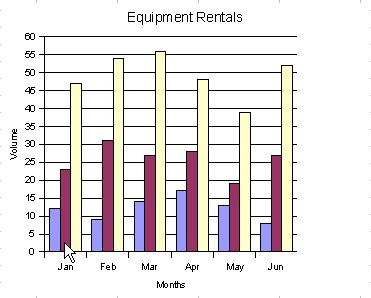
- #Openoffice columns how to
- #Openoffice columns install
- #Openoffice columns update
- #Openoffice columns download
IF entry A is greater than B THEN C is X ELSE C is Y.īut how does one do this? It's actually quite easy. That third columns' entry will depend upon the information in the first two.

Let's say you have two columns of numbers and you want to add a third column based on the other two data.
#Openoffice columns how to
For instance, did you know that Calc can do If/Else statements? In this spreadsheet tutorial you will learn how to use IF/ELSE statements in OpenOffice Calc. Openoffice Calc holds a lot more bang for the users' buck than you might think. Most people know the ins and outs of spreadsheets, but many don't realize just how powerful spreadsheets can be. And when I work in spreadsheets I work in OpenOffice. Gnumeric also loads much faster and runs with much less memory than do a lot with spreadsheets.
#Openoffice columns update
Update For those of you using GNU/Linux, Gnumeric has a built-in text-to-columns converter that’s very nice. So far it has worked fine for myself and my coworker. Here’s a screenshot of what it looks like.
#Openoffice columns install
This is really easy to do, but it took me a while to abandon my misdirected efforts to install it as a macro. It installs itself and shows up under the Tools > Add-Ons menu. Once I found it, installing the package was as easy as selecting the My Packages entry and pressing Add. I recommend not running it from the command-line just run it through Tools > Package Manager! Installing and using the package

Lo and behold, it brought up the same dialog I can access through the Tools > Package Manager menu entry. Then I ran it: xaprb $ /usr/lib/openoffice/program/unopkg gui I searched my filesystem and found it in /usr/lib/openoffice/program/unopkg. I found lots of references to something called unopkg, but nothing about where it’s installed. Then I tried to learn how to install an add-on. I went down the wrong path with macros until I realized this isn’t a macro, it’s an add-on. The difference between macros and add-ons in isn’t very clear to me, and the tools to manage them aren’t either. There are actually two add-ons, but apparently the “Text2Columns fixed width” one is redundant, since the “Text to Columns” one does that too.
#Openoffice columns download
You can download text to columns for Calc here. The add-on is available through SourceForge and the OOoMacros site, which is both a source of add-ons and help and examples for those wishing to make their own add-ons. So far I have not found any other way to cause this dialog to appear, which is puzzling. (Of course, it’d be nice if it were even smarter and auto-detected that for me). Instead of actually pasting it, this opens up the “Text Import (Pasted Data)” dialog, which lets me choose delimiters, etc-exactly what I need.
/open-office-calc-sum-data-sum-function-566de6ca5f9b583dc36c5d77.jpg)
Here is something I’ve noticed under GNU/Linux since writing this article: if I’ve copied text to the primary selection, for example by highlighting it in a terminal window, I can get OO.org to “text to columns” the text just by middle-click-pasting it into the spreadsheet. Writer has a text-to-columns feature already, and Calc’s Open process has what looks to me like the needed functionality too-when opening a delimited text file, it brings up a dialog that does exactly what I’d do with the text-to-columns feature in Excel. Oddly, it seems to already be implemented, but not in the way it’s needed. I hope this feature will be added into the office suite at some point. In this article I’ll explain how to install the add-on. has an extensible add-on architecture, and someone has written a “text to columns” add-on, but installation may be confusing. Unlike Microsoft Excel, 2.0 Calc doesn’t have a built-in “text to columns” feature, which is hard to live without once you’re used to it.


 0 kommentar(er)
0 kommentar(er)
